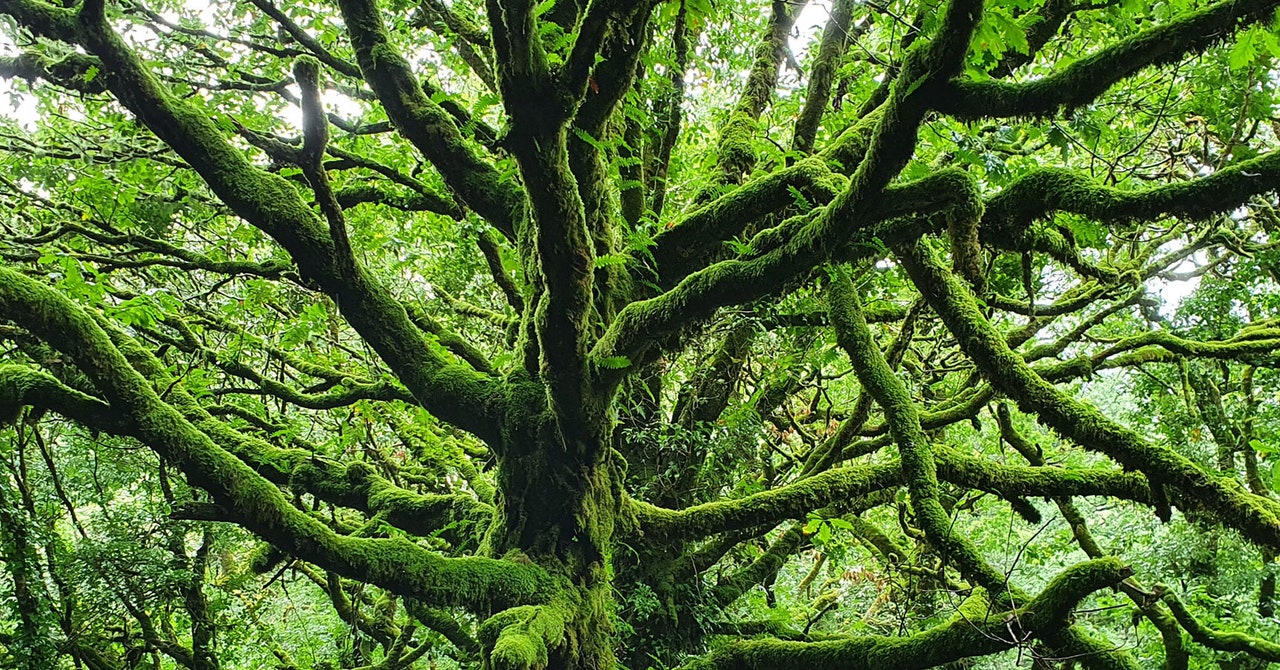
Hometree’s restoration effort, says Ó Foghlú, will be based on the advice of ecologists and foresters. But the tentative vision is to return pine forests to the upper slopes of the valley, willow and alder to the floodplain, and oak and birch to the valley sides. The group will also work to regenerate blanket bogs and protect species-rich grasslands.
But reforestation won’t be easy. Parts of these hills are so bereft of native trees that woods can’t easily regenerate. Centuries of heavy rainfall have also leached nutrients from the soil. James Rainey, an ecologist at Trees for Life, a nonprofit working on rewilding Scottish forests, says that while tree growth in such environments can be slow at first, woods will regenerate if you reduce the grazing pressure, make sure vegetation doesn’t catch fire too often, and ensure there is a local source of tree seeds. “If you have those criteria, you’re going to get recovery,” he says.
It’s about more than trees though. Rainey says specialist wildflowers and lichens may need to be reintroduced to piece the ecosystem back together. He also stresses the need to protect peatlands and other sensitive habitats in these hills. But he believes restoring temperate rainforests is vital. Globally, he says, they can only thrive in narrow climatic bands like the west coast of North America, the south of Chile, and the west of Ireland and Scotland. “We’ve got a massive challenge ahead to restore this ecosystem,” he says.
Yet Hometree’s wider vision could prove a tough sell in a land where native woodlands have been gone for so long. “Three to 5,000 years in most parts of Ireland,” says Ó Foghlú. “They’re not really part of our culture. We’ve become pastoralists, and that’s a reality we have to deal with.”
There is also little financial incentive for farmers to restore forests. Many farmers, says Ó Foghlú, see giving land over to reforestation as permanently taking it out of economic productivity. Farmers don’t see how their children will be able to earn a living from native woodlands in the future either, says Ó Foghlú. “And as of right now, you’re left with nothing to say to them.”
Many of Ireland’s hill farmers are also skeptical of conservation measures in general. In the 1990s, large tracts of Ireland’s western mountains were designated as conservation zones. Farmers say this was done with little input from landowners, that it restricted farming activity and devalued land, and that the payments offered in return have decreased over time. “The designations and the way they’ve been applied in Ireland has been fairly toxic,” says Vincent Roddy, president of the Irish Natura and Hill Farmers Association. “It’s probably done more to undermine the objectives as regards biodiversity than anything else. … And this is why farmers are very suspicious of anything new.”
But Hometree hopes to make forest restoration worthwhile for farmers. The organization is looking to raise at least $13 million from government, corporate, and philanthropic sources to fund its 1,600-hectare ambitions. It says it will put $2.7 million of this into a fund to reward farmers for protecting and restoring woodlands, run community events and school programs, and pay for visitor facilities.
Ó Foghlú imagines a future where farming and forests thrive side by side. He envisages healthy corridors of woodland providing shelter and forage to grazing animals on hill farms, safeguarding water quality, and connecting larger wooded areas. “I do think you can sell the concept of these woodlands on the idea that there are benefits to the farming systems, too,” he says.
If Hometree can demonstrate this along the Bealnabrack River and at its other project sites, the twin goals of thriving forests and thriving farms in these mountains might not seem so poles apart.
Services Marketplace – Listings, Bookings & Reviews
